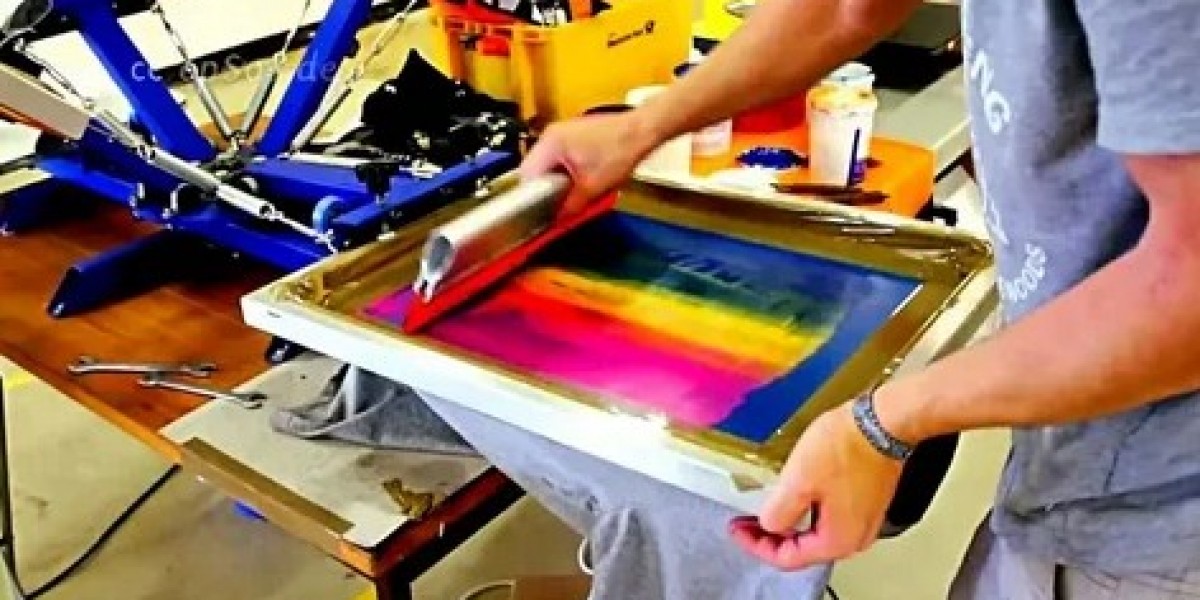T-shirt screen printing is a captivating blend of artistry and technology, bringing vibrant designs and personal expressions to life on fabric. Whether you're designing custom shirts for a sports team, a business, or simply for fun, understanding the nuances of screen printing can help you achieve the best results. This article delves into the essentials of t-shirt screen printing, from its history and process to tips for creating eye-catching designs.
A Brief History of Screen Printing
Screen printing, also known as t shirt screen printing traces its origins back to ancient China, where early methods involved using silk screens and stencils. However, the technique as we know it today began to take shape in the early 20th century. In the 1900s, artists and printers adapted the method for more complex and durable prints, significantly impacting the fashion and promotional industries.
The technique became particularly popular in the 1960s and 70s, thanks to artists like Andy Warhol, who used screen printing to produce iconic artworks. Since then, screen printing has evolved with technology, making it accessible for a wide range of applications, including t-shirt printing.
The Screen Printing Process
Screen printing involves several key steps, each crucial for producing high-quality prints. Here’s a breakdown of the process:
Design Creation: The journey begins with a design, which can range from simple text to intricate artwork. Digital tools like Adobe Illustrator or Photoshop are commonly used to create or refine designs.
Screen Preparation: A screen is a mesh stretched over a frame. For screen printing, a stencil of the design is created on the screen. This is done by applying a light-sensitive emulsion to the screen and exposing it to light. The areas not exposed to light remain soft and are washed away, leaving a stencil of the design.
Ink Application: Once the screen is prepared, it is placed over the t-shirt. Ink is then applied to the screen and pushed through the mesh using a squeegee. The ink passes through the open areas of the stencil and onto the fabric beneath.
Curing: After printing, the ink needs to be cured to set it on the fabric. This is typically done using a heat press or conveyor dryer. Curing ensures the ink bonds with the fabric, making the print durable and resistant to washing.
Quality Check: Finally, the printed shirts undergo a quality check to ensure that the design is aligned correctly and the print is consistent.
Choosing the Right Ink and Fabric
Selecting the right ink and fabric is crucial for achieving a quality print. Here’s what you need to know:
Ink Types: The most common types of ink used in screen printing are plastisol and water-based inks. Plastisol ink is known for its vibrant colors and durability, making it a popular choice for t-shirt printing. Water-based inks, on the other hand, are more eco-friendly and offer a softer feel but may require more precise curing.
Fabric Choice: The fabric of the t-shirt can affect how the ink adheres and appears. Cotton is a popular choice due to its absorbency and compatibility with various inks. Blends like cotton-polyester can also be used, though they may require special inks and curing processes.
Designing for Screen Printing
Designing for screen printing involves considering both aesthetic and practical aspects:
Color Limitations: Unlike digital printing, which can reproduce a wide range of colors, screen printing typically works best with a limited color palette. Each color in your design requires a separate screen, so simplifying your design can reduce costs and production time.
Detail and Size: Fine details can be challenging to reproduce in screen printing. It's essential to balance intricate design elements with the capabilities of the screen printing process. Additionally, consider the size of the design relative to the shirt's print area.
Positioning: Placement of the design on the shirt affects its visual impact. Common positions include the center chest, left chest, and back. Ensure the design is centered and appropriately sized for the chosen location.
Benefits of Screen Printing
Screen printing offers several advantages, making it a preferred method for many custom t-shirt projects:
Durability: Screen-printed designs are known for their durability. The ink forms a strong bond with the fabric, which resists fading and cracking over time.
Vibrant Colors: The thick layer of ink used in screen printing allows for vibrant, eye-catching colors that stand out on various fabrics.
Cost-Effectiveness for Large Runs: While the initial setup cost for screen printing can be high, it becomes cost-effective for large quantities due to the ability to reuse screens and produce multiple shirts in one run.
Tips for Successful Screen Printing
To ensure the best outcome for your screen printing project, keep these tips in mind:
Work with a Reputable Printer: Choose a screen printing company with experience and a good track record. Look for reviews or ask for recommendations to ensure quality and reliability.
Test Prints: Before committing to a large order, request a test print to see how the design looks on the fabric. This allows you to make adjustments before the final run.
Maintain Design Simplicity: Especially for beginners, keeping designs simple can help achieve better results and reduce production complications.
Care Instructions: Provide care instructions to ensure the longevity of the print. Recommend washing the shirts inside out in cold water and avoiding high heat when drying.
Conclusion
T-shirt screen printing is a versatile and enduring method for creating custom apparel. With a rich history, a detailed process, and numerous benefits, it remains a popular choice for designers and businesses alike. By understanding the basics and following best practices, you can ensure that your screen-printed shirts are both high-quality and visually stunning. Whether you're designing for a team, an event, or personal expression, screen printing offers endless possibilities for creativity and customization.


